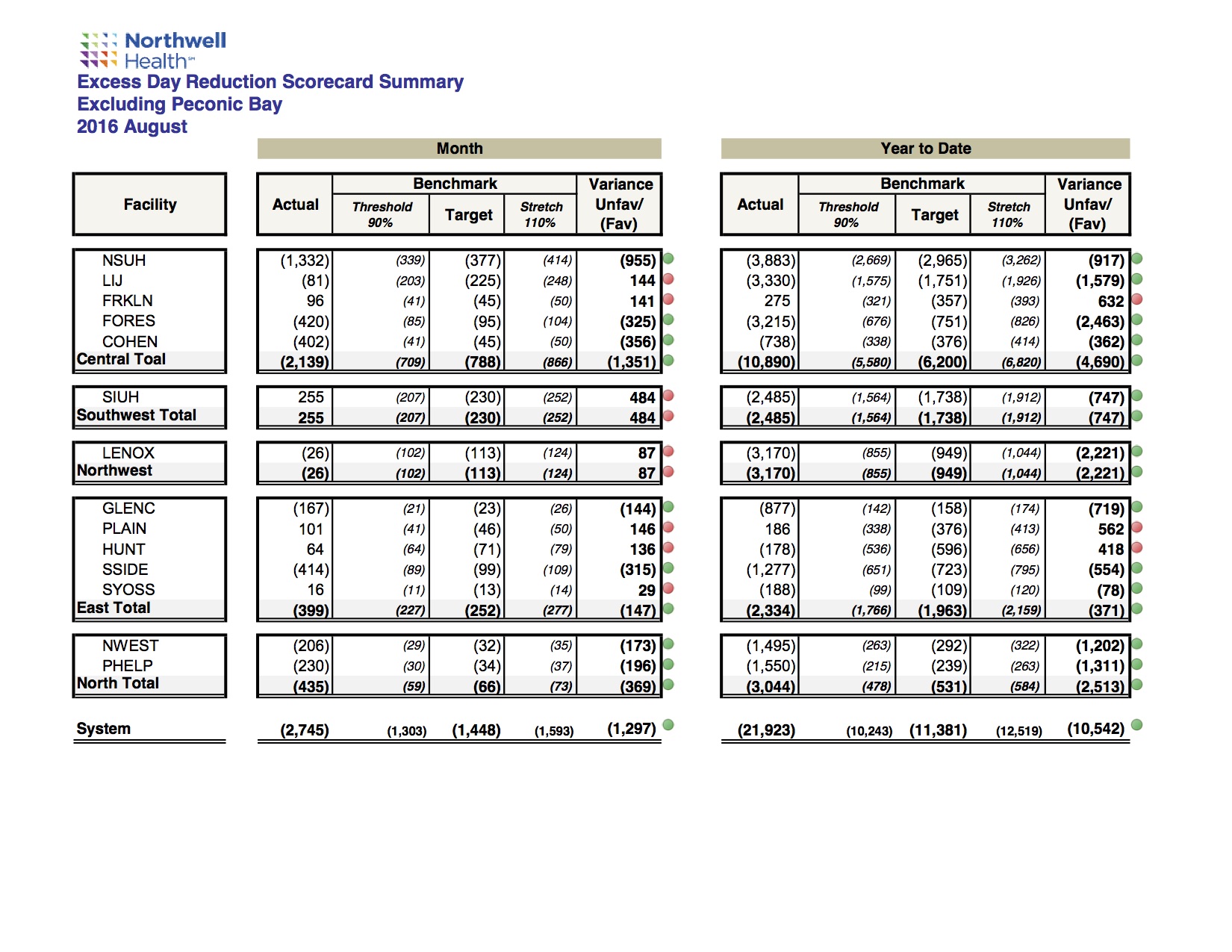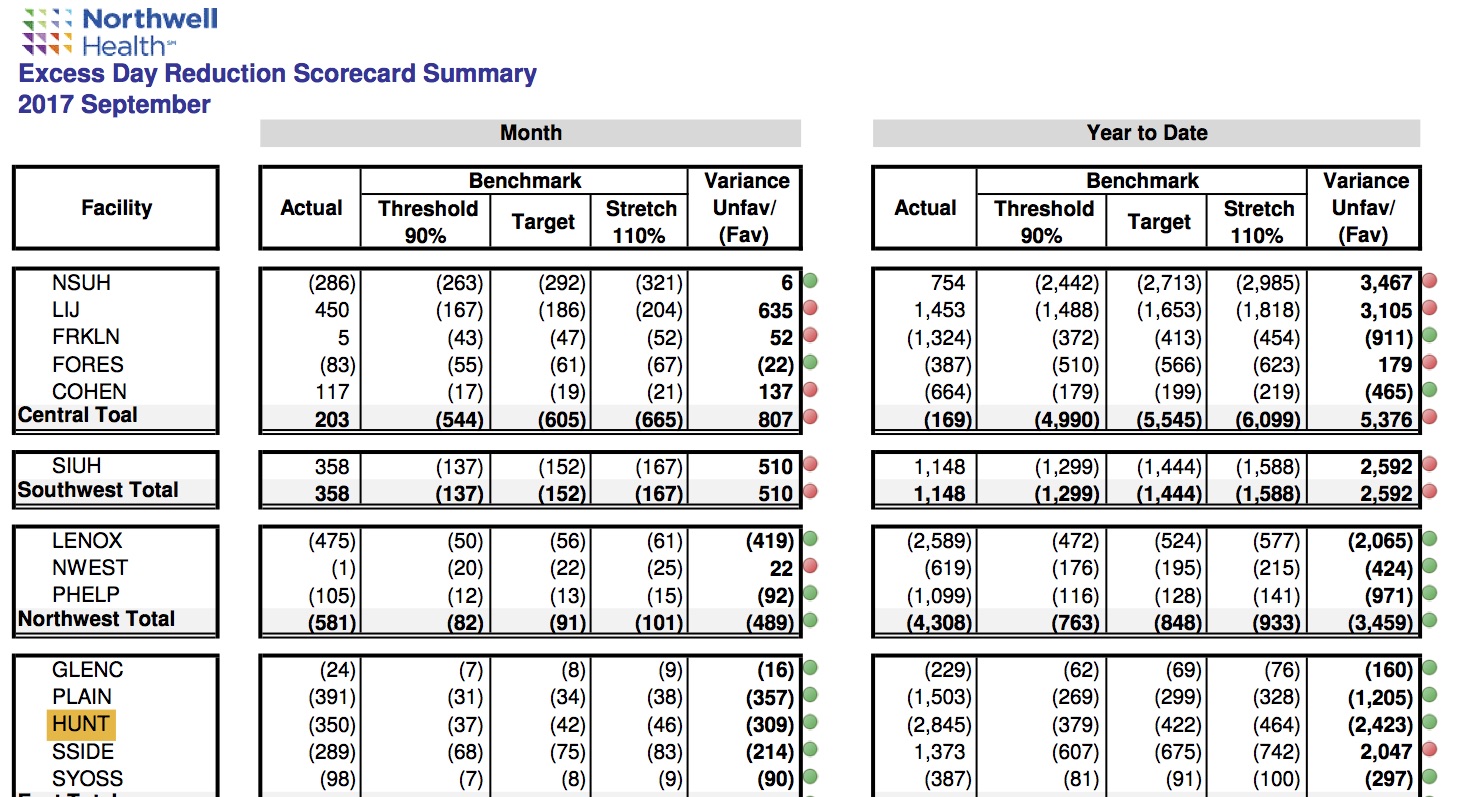Background: Hospitalists today are tasked with maintaining quality care while also lowering health care costs. Length of stay and excess day reduction are surrogate markers of the efficiency of a hospitalist group by measuring lower utilization of resources. Despite this metric being attributed to hospitalists, there are many other departments that have key roles in controlling length of stay.
Purpose: To reduce length of stay and excess days through a multidisciplinary approach.
Description: Huntington Hospital is a mid-sized community hospital in a large health care system. Hospitals within the health care system are given targets for achievement based on prior performance. In August of 2016, our hospital was exceeding the length of stay and excess days target rates by 416 unfavorable excess days. Our 2017 goal was made to reduce by 422 favorable days for a similar time period.
Two interdependent approaches contributed to our eventual success for 2017. First, our department committed to geographic rounding for all medical-surgical floors. We moved from bedside interdisciplinary rounds to a centralized huddle for exchange of information. The team involved in the huddle included the hospitalist, nurse, social worker, case manager, and nurse manager. In addition to discussion of the daily plan with the team, discharge planning is targeted. From these rapid fire rounds the nurse manager gathers information regarding daily discharges as well as any barriers that might prevent timely release from the hospital.
The information from the daily huddle is transmitted through the nurse manager to daily hospital wide throughput rounds. Hospital throughput rounds include all major stakeholders for the hospital, namely the Chief Medical Officer, Hospital Medicine leadership, Nursing Leadership, Case Management leadership, and a representative from the Logistics team. These daily rounds compile a targeted number of discharges for the day. Additionally, two days a week patients with lengths of stay over five days are discussed. The nurse manager can relay any obstacles that are contributing to possible excess days and additional support is applied immediately. Because the platform provides a daily forum for escalation of issues to leadership, the process of involving additional help for discharge planning is expedited.
Using the geographic daily huddle and hospital wide throughput rounds together has allowed our hospitalists to reduce excess days by 2845 favorable days year to date in September. We had the largest excess day reduction in our health system and lead our region with the highest number of favorable excess days.
Conclusions: Hospitalist led interdisciplinary huddles started a cascade of multilevel support to allow favorable reduction in excess days in a hospital that previously was unfavorable


